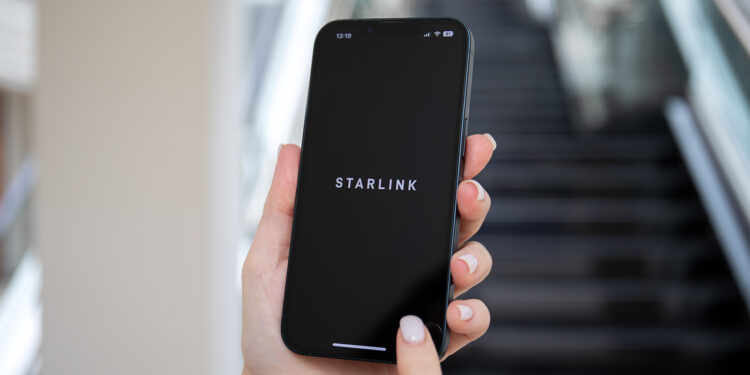In remote areas without cell reception, things can quickly become critical if an emergency occurs. An accident while hiking or a medical emergency in a region without cell coverage often means that help cannot be called. Apple has developed a solution for this that makes it possible to send emergency calls via satellite. Until now, this service ran via the Globalstar network. Now it is being expanded through a cooperation with Starlink. Initial tests with T-Mobile in the USA show what this changes for iPhone users and what advantages the new system brings.
The idea of sending emergency calls via satellite is not new, but until now it has been subject to limitations. Users had to point their iPhone in the direction of a satellite to establish a connection. Starlink could change that. The cooperation also opens up new possibilities for the future that go beyond simple emergency calls. The current test run is limited to the USA, but it is conceivable that the function will later be available in other countries.
Apple expands satellite emergency call
Until now, Apple relied on Globalstar for the “SOS emergency call via satellite”. Now the system has been expanded with the support of Starlink (via Bloomberg). Initial tests are already underway, but initially only with the US mobile operator T-Mobile. Users must have at least iOS 18.3 installed and register for the beta phase. This should make emergency calls via satellite more reliable and convenient. The most important innovation: In contrast to the previous Globalstar solution, the iPhone no longer has to be pointed in a specific direction to establish a connection. This makes the service much easier to use, especially in stressful situations.
The benefits of Starlink integration
The cooperation between Apple and SpaceX brings some improvements for iPhone users.
- The connection becomes easier because the iPhone no longer needs to be precisely aligned.
- Starlink not only enables text messaging but could soon also transmit medium-resolution images, music and podcasts.
- In addition to T-Mobile in the USA, the Swiss network operator Salt is also involved in the project.
These improvements are made possible by “direct to cell” technology, which allows mobile phones to connect directly to satellites without the need for special hardware or a satellite dish.
How does satellite emergency calling work with the iPhone?
iPhone 14 and newer models can connect to satellites in emergencies when cellular coverage isn't available. Previously, this was only possible through Globalstar. Now, iPhones in the US can also use the Starlink network. If you need to make an emergency call and don't have traditional cellular coverage, iPhone will indicate that a satellite connection is available. Previously, it was necessary to point the device exactly in the direction of the satellite to establish a connection. Starlink removes this limitation, making it easier to use in emergencies.
Future developments
Elon Musk has already indicated that the technology will be expanded further. In addition to sending text messages, it could also be possible to transmit voice and video calls via satellite in the future. This would make the iPhone an even more powerful emergency tool. At the moment, the service is limited to the USA and the network operator T-Mobile. However, it is conceivable that Apple will offer the function in other regions and with other network operators in the future.
Better accessibility in emergencies: What Starlink means for the iPhone
The expanded satellite emergency call with Starlink could mean a big step forward for iPhone users. Safety is significantly improved, especially for people who often stay in regions without cell reception. The first tests in the USA show that the service is already working, albeit only in a beta phase for the time being. It remains to be seen whether and when Starlink will be available for satellite emergency calls in other countries. The technical basis is certainly promising. Anyone who owns an iPhone 14 or newer and regularly travels in remote areas should keep an eye on this development. (Photo by DenPhoto / Bigstockphoto)
- FLOP & SLAP: Security vulnerabilities in Apple's M and A chips
- Apple under pressure: Stricter controls threatened in Germany
- Streaming market 2024: Spotify reports historic payout





